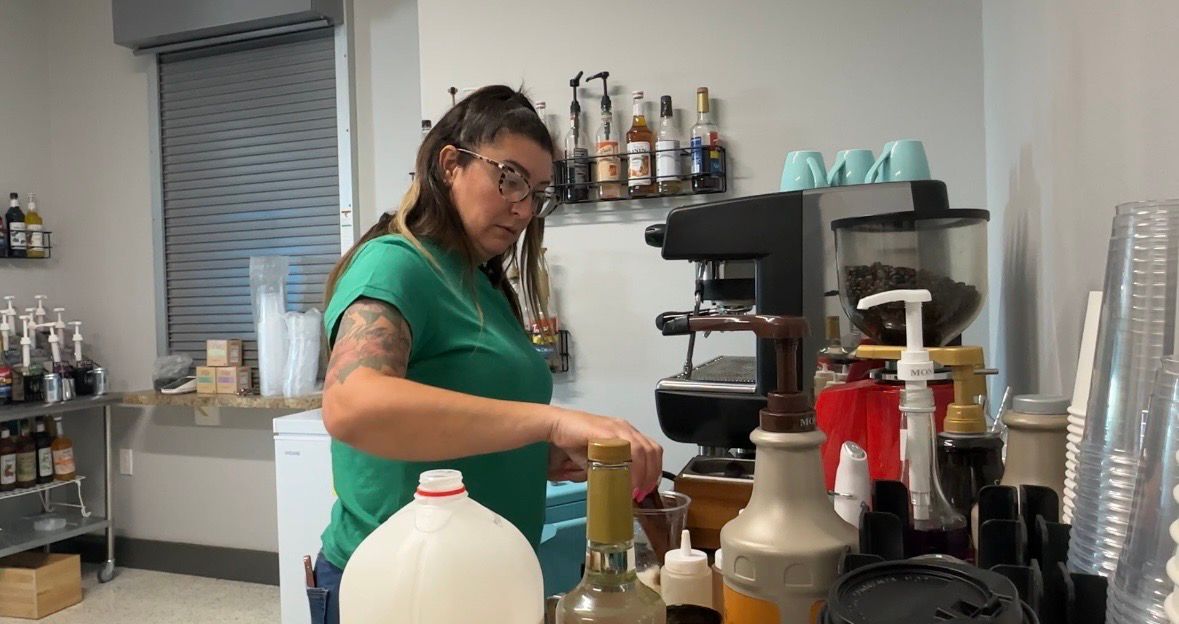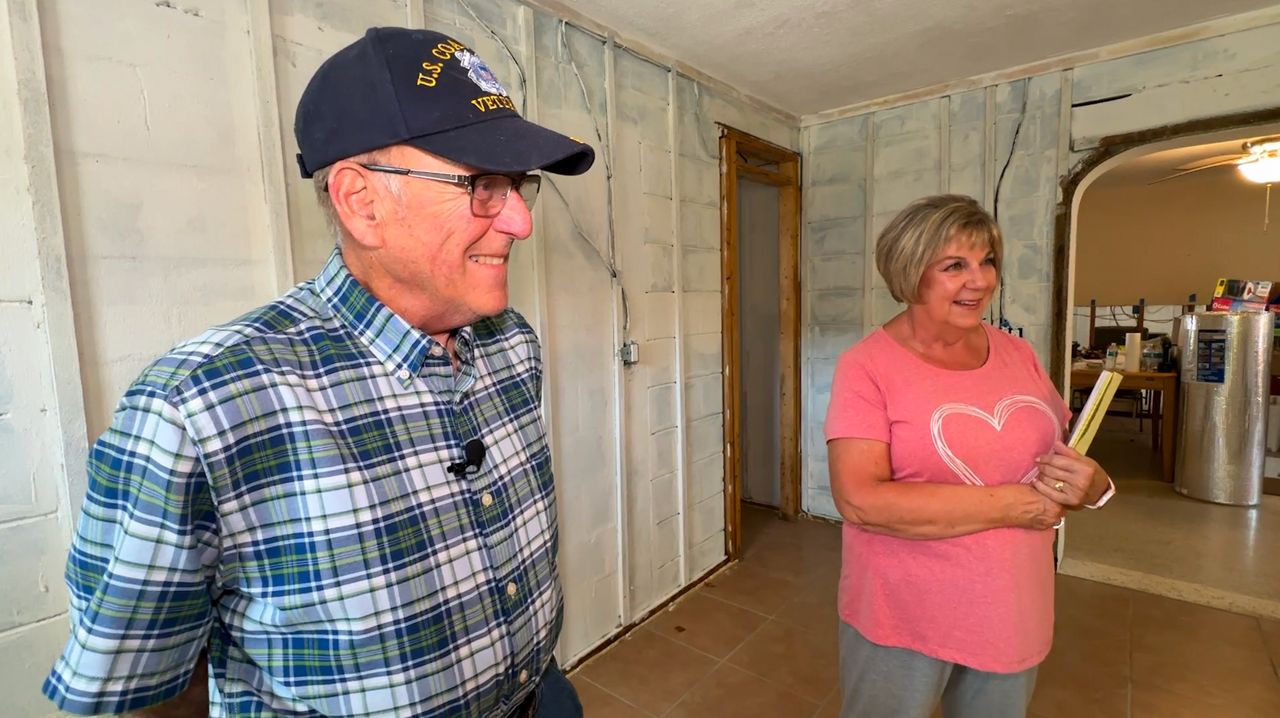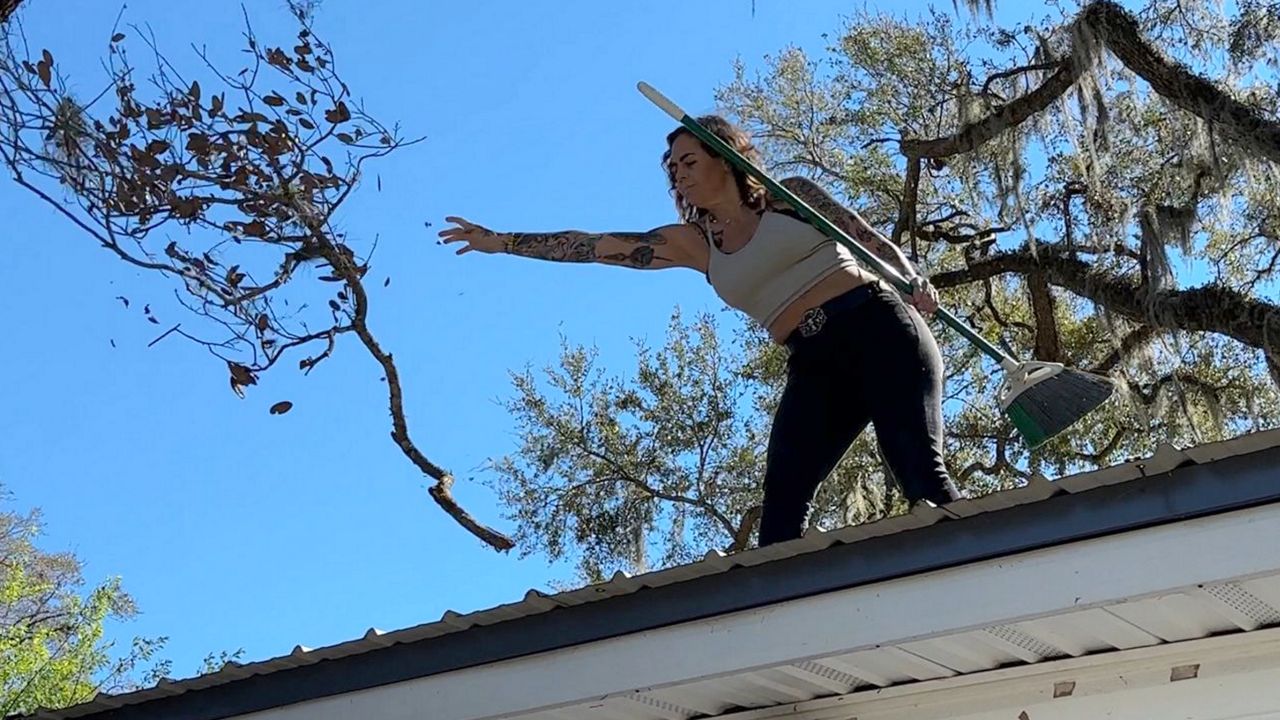INDIAN ROCKS BEACH, Fla. — The lines of communication from the Army Corps of Engineers has opened up since Pinellas County leaders traveled to the White House last month to look for a solution to a beach renourishment battle, according to Public Works Director Kelli Hammer-Levy.
Hammer-Levy said Pinellas County Commission Chairperson Janet Long used her connections to get the Pinellas team in the White House.
On March 6, they met with a senior adviser to President Joe Biden and the Army Corps White House liaison.
“We haven’t had that dialogue in a while because frankly the project was put on hold because we didn’t have the easements,” Hammer-Levy said. “So, the fact that they’re asking us to update that information is a good thing.
“I was quite shocked when we were exiting the Eisenhower building and walking into the West Wing. The hairs on my arms were standing up. There’s nothing quite like that feeling.”
The beach renourishment impasse between Pinellas County and the Corps is due to a policy that requires all beach front homeowners to sign permanent easements, which includes some private backyards, before any extra sand can be pumped onto the beach, according to Hammer-Levy.
“We’ve been really having a challenge,” she said. “How do you convince property owners that have a dune in front of their property and then a beach in front of their property that it’s necessary for that easement back there?”
Levy said because only 48 percent of the 461 easements needed have been signed, the beach renourishment for the Sand Key barrier island for 2024 has been put on hold. Sand Key stretches 14 miles from Clearwater Pass south to John’s Pass, but only about 9 miles of the public beach gets renourishment.
“In some areas of our Sand Key project, up north in Clearwater, they have water right up to the edge of the seawall,” she said. “Those folks signed the easement readily because they understand they’re in a highly eroded area.”
It’s much harder to get homeowners to sign easements in areas like Indian Rocks Beach where there’s a lot more sand but without continued renourishment every 6 years it will also erode away, according to Levy.
“If we do not keep up the periodic nourishment of this beach, what will happen is that water will continue to erode that beach berm,” she said. “It will start to erode away the dune until it’s to the seawall. It took 30 years to get here. We don’t want to go backwards.”
When Hurricane Elena brushed by the coastline in 1985, it washed away Indian Rocks Beach to the seawall, according to Levy. The first Sand Key nourishment was constructed in three phases starting in 1988 and ending in 1992.
According to the Florida Department of Environmental Protection, 29 percent of the sand pumped onto Indian Rocks Beach in 2018 remains and the number drops to zero percent in North Redington Beach. Pinellas beaches are the lifeblood of tourism in the county with an annual economic impact of more than $10.3 billion, according to Visit St. Pete/Clearwater.
Dr. John Bishop, the Pinellas County Coastal Management Coordinator, said even though the beach also provides a habitat for animals the renourishment is strictly to provide a first line of defense against storms.
“The reason why the Army Corps does this project isn’t for habitat restoration, it’s not for tourism, it’s for storm damage reduction,” he said. “This is a storm damage reduction project which is designed to mitigate the impact to upland private and public infrastructure.”
Levy said they’re hoping the Corps will meet Pinellas County in the middle and allow for temporary easements.
“We’re asking them to honor the agreement that we’ve used in the past,” she said. “The change in policy, we don’t really understand it. We definitely don’t agree with it. So, we’re asking them to reconsider.”
The Corps did allow for a one-time exception to its policy in 2018. As for the current impasse, USACE spokesperson David Ruderman stated the Corps continues to review this matter both internally and in coordination with the non-Federal sponsor to enable sand placement at Sand Key.
Ruderman stated some Pinellas beaches south of Sand Key will receive nourishment later this year.
”Jacksonville District is presently in the midst of planning regular cyclical beach nourishment for two Pinellas Co locations: Treasure Island and Long Key, where the county has provided all necessary easements required by the Corps,” he said. “The district expects to award contracts for these Shore Protection Project renourishments in late summer and begin beach placement in early autumn.”
Hammer-Levy estimates it costs between $45-to-$55 million to renourish Sand Key and the Corps typically pays for 62 percent. The County and State split the cost of the remaining 38 percent as long as there’s a federal partner.
The Public Works Director worries that if the Corps won’t budge on its policy, the county and beach cities will have to figure out a way to pay for it.
“We’ll have to put together a proposal of what constructing this project locally would like,” she said. “Present that to the cities and back to the board of county commissioners for consideration.”









